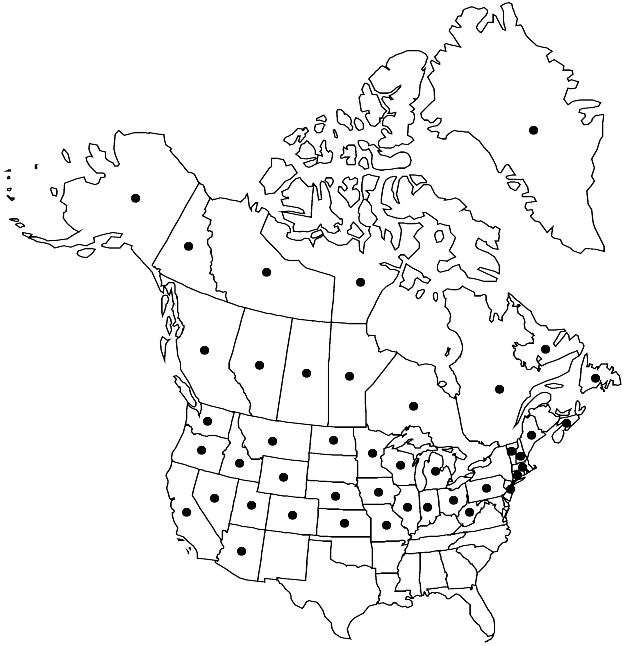Ptychostomum bimum
Phytologia 87: 20. 2005.
Plants in dense turfs, green or yellow-green. Stems 1.5–3(–4) cm, comose, innovations elongate and evenly foliate; often strongly radiculose. Leaves green, weakly twisted to contorted when dry, ovate, flat to weakly concave, (1–)2–3(–3.5) mm, not much enlarged toward stem apex; base weakly decurrent; margins revolute to mid leaf or beyond, limbidium strong, in 2 or 3 rows; apex acute; costa short-excurrent, awn smooth; proximal laminal cells 3–4:1, same width or narrower than more distal cells; medial and distal cells rhomboidal, 12–18 µm wide, 3–4:1, walls firm to sometimes very incrassate, sometimes at oblique 30–45° angle to costa. Specialized asexual reproduction absent. Sexual condition synoicous. Seta 1–3(–4) cm. Capsule brown, elongate-ovate, symmetric, 3–5 mm, mouth yellow; operculum conic, apiculate; peristome well developed; exostome teeth yellow basally, hyaline distally, lamellae usually straight mid tooth, pores absent along mid line; endostome not adherent to exostome, basal membrane high, 1/2 exostome height, segments with ovate perforations, cilia long, appendiculate. Spores (10–)12–16 µm, finely papillose, pale yellow or green.
Phenology: Capsules mature May–Aug.
Habitat: Wet soil, soil over rock, rock
Elevation: low to high elevations (0-3000 m)
Distribution

Greenland, Alta., B.C., Man., Nfld. and Labr., N.W.T., N.S., Nunavut, Ont., Que., Sask., Yukon, Alaska, Ariz., Calif., Colo., Conn., Idaho, Ill., Ind., Iowa, Kans., Maine, Mass., Mich., Minn., Mo., Mont., Nebr., Nev., N.H., N.J., N.Dak., Ohio, Oreg., Pa., Utah, Vt., Wash., W.Va., Wis., Wyo., South America, Eurasia, Africa, Pacific Islands (New Zealand), Australia.
Discussion
Ptychostomum bimum has in the past been considered a form of P. pseudotriquetrum, but V. I. Zolotov (2000) provided characters that can generally separate the two species. Ptychostomum bimum is a common species on damp to wet soil or soil over rock, but its distribution is not well understood as it has had little recognition in the past. The species appears to be much more common than P. pseudotriquetrum in eastern North America.
Selected References
None.